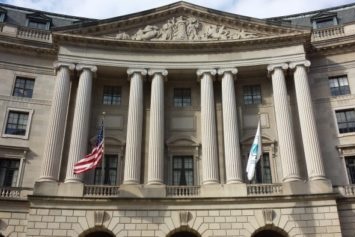The EPA’s Office of Enforcement and Compliance Assurance (OECA) has stepped away from an earlier policy that created an expectation that in settlements with violators of environmental law and regulation, Agency case teams are expected to make use of “innovative enforcement” tools. The Agency now states that while such tools have proven useful, case teams are not required to “routinely” make use of them in settlements.

Next Generation Compliance
The use of innovative enforcement tools was a highlight of the Obama EPA’s Next Generation (Next Gen) Compliance initiative, which, the Agency said at the time, had the goal of increasing compliance with environmental regulations by using advances in pollutant monitoring and information technology combined with a focus on designing more effective regulations and permits to reduce pollution. The initiative emphasized the use of innovative enforcement tools, which included injunctive relief, mitigation, and Supplemental Environmental Projects. Specific measures under these headings included advanced monitoring, independent third-party verification of a settling party’s compliance and settlement obligations, and electronic reporting.
In a January 2015 memo, the OECA noted that Next Gen Compliance tools have the potential to improve compliance and provide significant benefits to the EPA, the public, and the regulated community. “As such, they should be considered in all civil enforcement cases [other than expedited settlements] and incorporated in civil and administrative settlements whenever appropriate,” the OECA stated.
No Default Expectation
In an April 2018 memo, the OECA withdrew the earlier memo and emphasized that “there is no default expectation that ‘innovative enforcement’ provisions will routinely be sought as injunctive relief where such activities are not required by the applicable statute or regulation.”
The newer memo notes that injunctive relief—that is, an order to do or not do a specific action—can be applied to remedy noncompliance and/or mitigate the harm of noncompliance. But, the memo emphasizes, innovative enforcement provisions, where such activities are not required by the applicable statute or regulation, are just one of many tools available to address environmental law violations and return facilities to compliance.
“Identification of the appropriate injunctive relief to use to resolve violations and whether to seek actions not specified in the applicable statute or regulation depend on the wise exercise of enforcement and prosecutorial discretion,” states the OECA. “This judgment is informed by the particular facts and circumstances of an individual case, the nature of the violations at issue, the history of noncompliance, and various other case-specific considerations.”
Repeat Violators
The memo points out that injunctive relief may be appropriate in certain circumstances. For example, when faced with a repeat offender, the Agency’s Office of Civil Enforcement may initially refer the matter for criminal enforcement. But if criminal enforcement is not applicable, more directive injunctive relief may be appropriate. Limiting injunctive relief tools to circumstances of this nature would considerably narrow the instances in which EPA enforcement staff would seek to make use of innovative enforcement tools. Any consideration of such tools should not be a routine matter, the OECA emphasizes.
“The extent to which any tool is appropriate and how it is included in a settlement will depend on the particular facts and circumstances of each case,” says the OECA.
